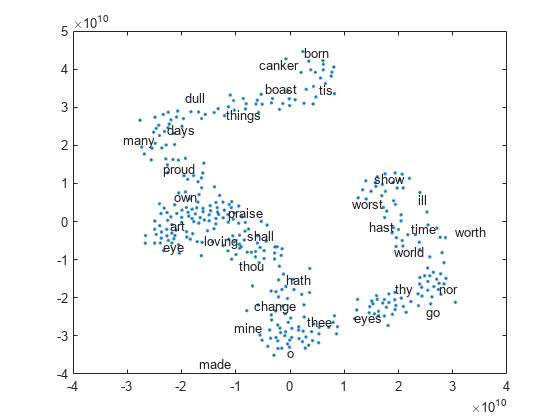trainWordEmbedding
Train word embedding
Syntax
Description
emb = trainWordEmbedding(___,Name,Value)'Dimension',50 specifies the word embedding dimension to
be 50.
Examples
Input Arguments
Name-Value Arguments
Output Arguments
More About
Tips
The training algorithm uses the number of threads given by the function
maxNumCompThreads. To learn how to change the number of threads
used by MATLAB®, see maxNumCompThreads.
References
[1] Bojanowsku, P., E. Grave, A. Joulin, T. Mikolov. "Enriching Word Vectors with Subword Information." Transactions of the Association for Computational Linguistics 5 135-146, 2017. https://doi.org/10.1162/tacl_a_00051.
Version History
Introduced in R2017b


